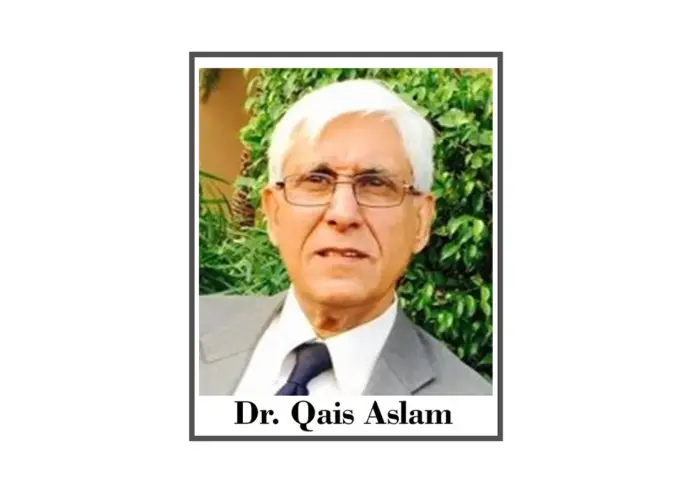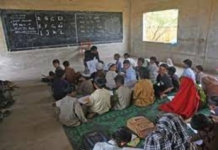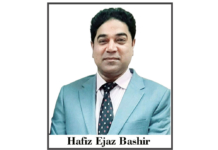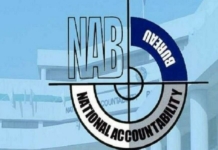Pakistan’s relations with the International Monetary Fund (IMF) started on May 1, 1984, when Pakistan took its first loan from the FUND (IMF) of US$ 89.25 million (calculated at exchange rate of SDR’s 0.57813 = 1 US Dollar), added with interest and other charges on this amount was US $ 106.0 million. By the end of 1985 the liability of Pakistan towards the FUND (IMF) was almost US $ 312.6 million, and in 1989 came down to US $ 293.0 million. In 1990 our liability was further reduced to US $ 211.7 million. But in 2000 Pakistan’s liability towards the FUND increased to US $ 259.5 million. In 2013 Pakistan’s liability towards IMF was US $ 4,151.3 million that was reduced to zero in 2017.
In 2018 Pakistan took a new loan from IMF to a tune of US $ 259.5 million and at the end of 2022 (Data as of January 31, 2023) our liabilities towards IMF have reached US $ 1,266.5 million (Source:https://www.imf.org/external/np/fin/tad/extrans1.aspx?memberKey1=760&endDate=2099-12-31&finposition_flag=YES).
The PDM government has been having tough negations with IMF for another bailout from default when the Foreign Exchange reserves of the country reached historic low at US $ 2.9 billion and a balance of Payment’s Deficit that stood at US $ 0.276 billion. Pakistan owes to a tune of US $ 9.0 billion as its external liabilities (interest and principal) to the world.
With Pakistan’s economy at near collapse, there is political instability in the country and terrorist threats and insurgency in KPK and Baluchistan as well as a large part of the country is still reeling from the 2022 floods that were the cause by climate change and have killed thousands and displaced millions of people and the country needs at least US $ 30 billion for rehabilitation and infrastructure rebuilding in flood hit areas.
Almost 12 million new jobs are needed in the country for the unemployed when the policy interest rate is 17%, the cost of doing business has increased and inflationary rates are near 33%. Also, the cost of energy inputs like petrol deasil, electricity and LPG have substantially increased in the past few months. The recent UNDP Report shows that 4.5 million people (about twice the population of New Mexico) have been added to the absolute poverty line and out of these 1.5 million live in acute poverty and to survive, are forced to adopt adverse economic activity.
All these figures show that the cost of living for the venerable and fragile part of the people has substantially increased and the cost of investment has also increased to an extent that investors are not interested in investing into real businesses and therefore are reverting towards speculative US dollar buying, increasing the Rupee price oof dollar to near Rs. 300 in the open market, creating an artificial shortage of dollar for the importers of the country. This rise in price of dollars has also increased the country’s debt substantially.
Although the Finance Minister of Pakistan is certain about a potential deal of “installment of US$ 1.1 billion in loans from a $6.5 billion bailout”. The actual agreement is still allusive as the IMF team left Islamabad a few days ago and has asked the government of PM Shabaz Sharif to enforce new taxes to a tune of Rs. 170 billion. “IMF gave Pakistan a list of necessary steps to undertake and asked for more time to reach an agreement”. “IMF said in its statement that the key priorities of the MEFP with the Pakistan government comprise bolstering fiscal position with permanent revenue measures, allowing the market to determine the foreign exchange rate to alleviate forex shortage, reduction in untargeted subsidies while scaling up social protection to help the most vulnerable, and those affected by the floods, enhancing energy provision by preventing the accumulation of circular debt and ensuring the viability of the energy sector”. The Mini Budget for new taxes was put in front of the parliament by the finance minister.
Although the finance minister insists that these new taxes would hit the rich, rather than the poor, because many of these new taxes are indirect taxes, the burden of these certainly would be passed on to the general consumers by the rich and powerful. Increase in petrol and deiseal prices by another Rs. 22 per litter has subsequently increased the prices of transport and freight and thus increased the prices of vegetables, fruits and other eatables in the urban market, that would certainly put further inflationary pressure on the lower middle classes and the poor that were already struggling to make ends meet.
It is interesting to note that the government had many other options to raise these Rs. 170 billion. On the one hand income tax slab on the ultra-rich could have been increased. Also, wealth tax could have been imposed on property and land holdings above a certain reasonable limit of holdings. A one-time 100% windfall tax could have been imposed on speculative dollar transactions as well as on other rent seeking activities that promote a gray economy, rather than a white economy. The prices of LNG sold on the market and gas transmitted through the pipeline to domestic consumers could have been made uniform so that the rich paid an equitable amount as the poor for usage of energy resource. Many other measures that would have milked the super-rich but protected the poor and the fragile strata could have been introduced. On the other hand, 85 ministers in the federal government as well as many ministers in the four plus two provincial government and their perks and privileges could been reduced or eliminated so that an economy that is fragile and suffering should not have a privileged class that does not pay taxes but uses the tax money for a lifestyle that is practically the lifestyle of a decadent nation. Many measures to reduce unnecessary government spendings on non-development could have been curtailed. Only then could we believe in the sincerity of the government’s intention.
If serious foreign exchange earning capacity and job creation, value added activity of industrial and agricultural sectors coupled with exportable service sector are not initiated through a long-term economic policy that gives freedom to the SME’s and large-scale investors to employ and produce, the nation repeatedly would fall into this debt trap and every few years later would become subject to threats of default. It is recommended that the government should care for all of Pakistan in the same way that it is trying to care for a few elite. Only than Pakistan would get out of its economic and political crisis when the policy makers are serious about the people of the country in all respects.







